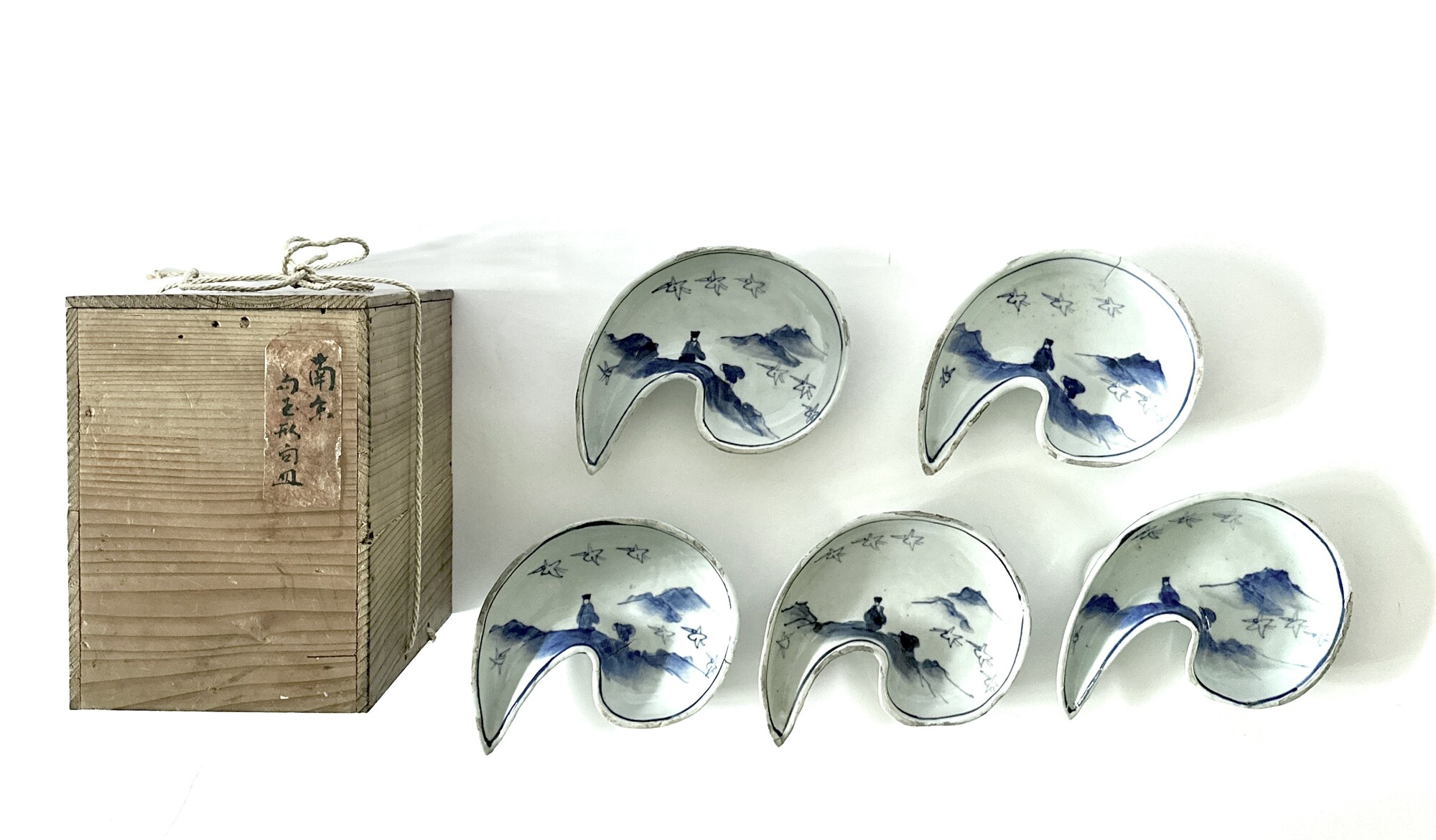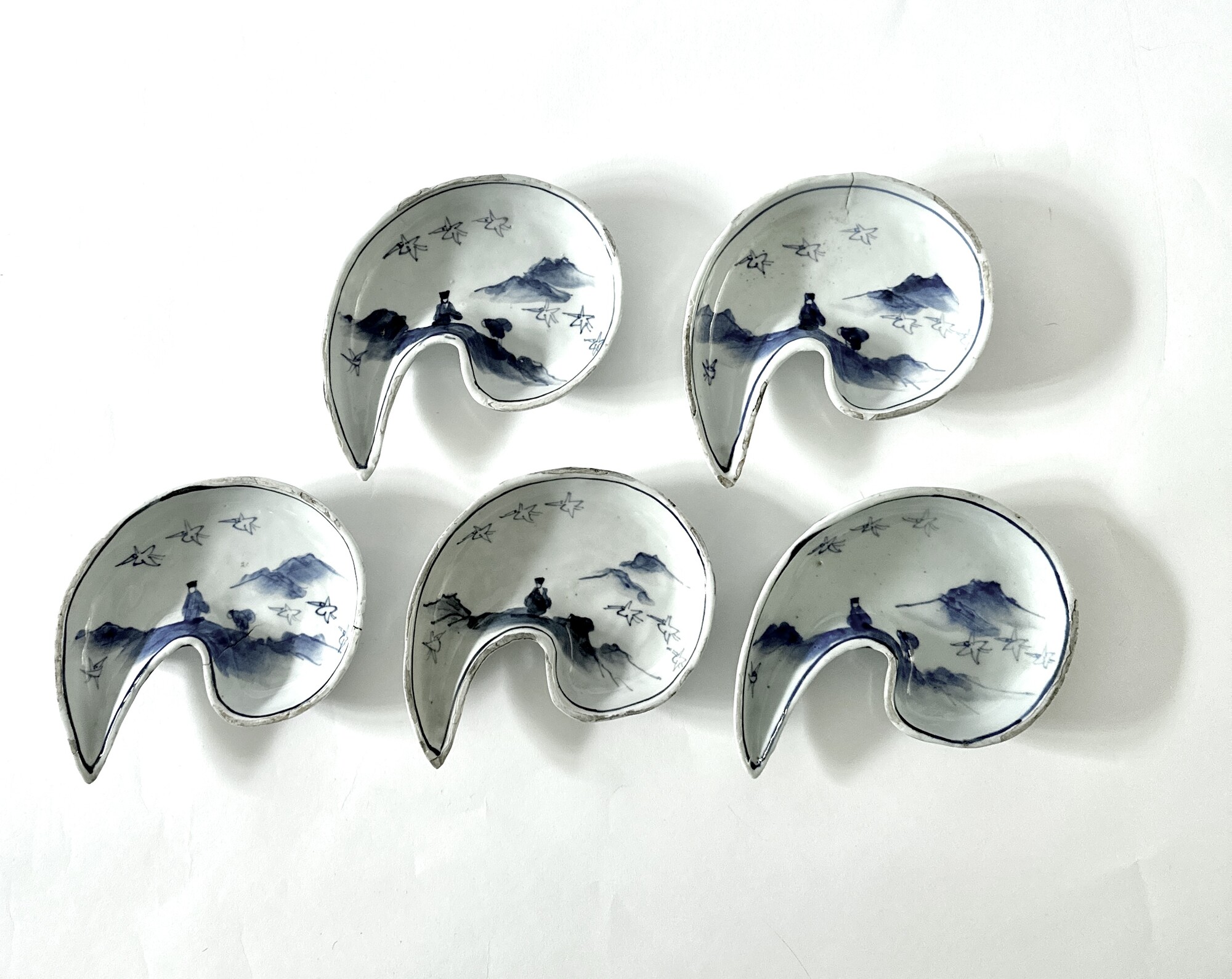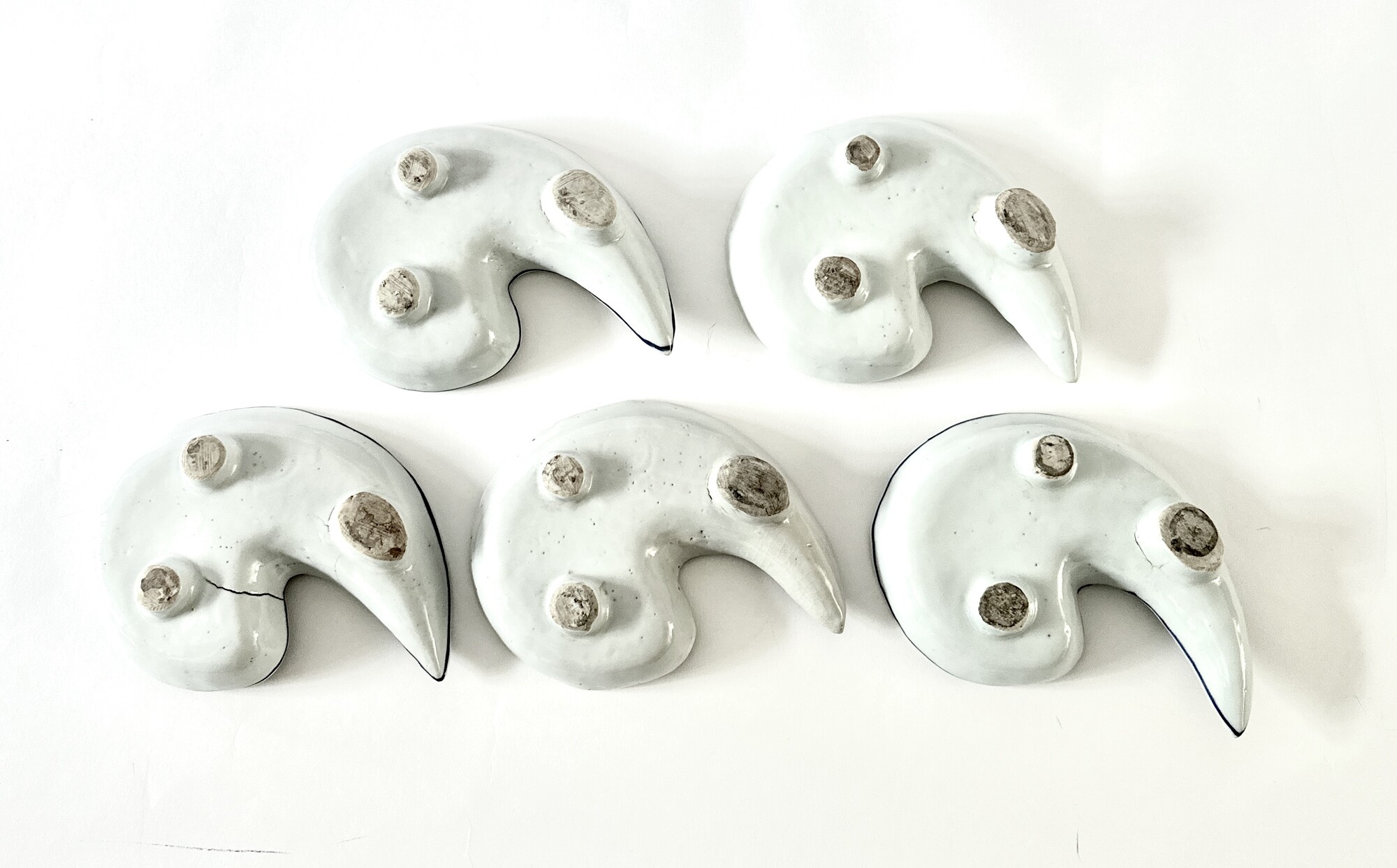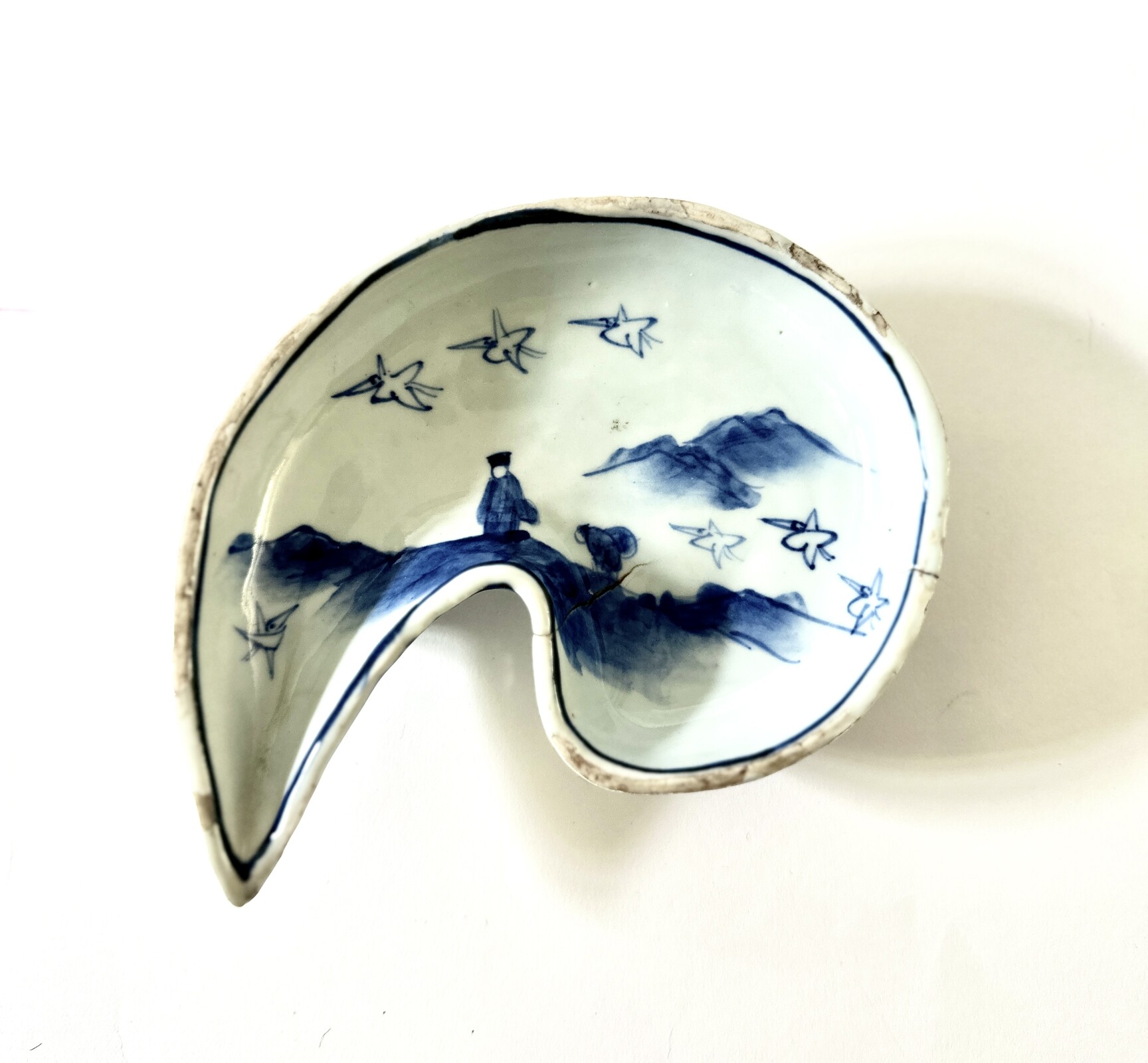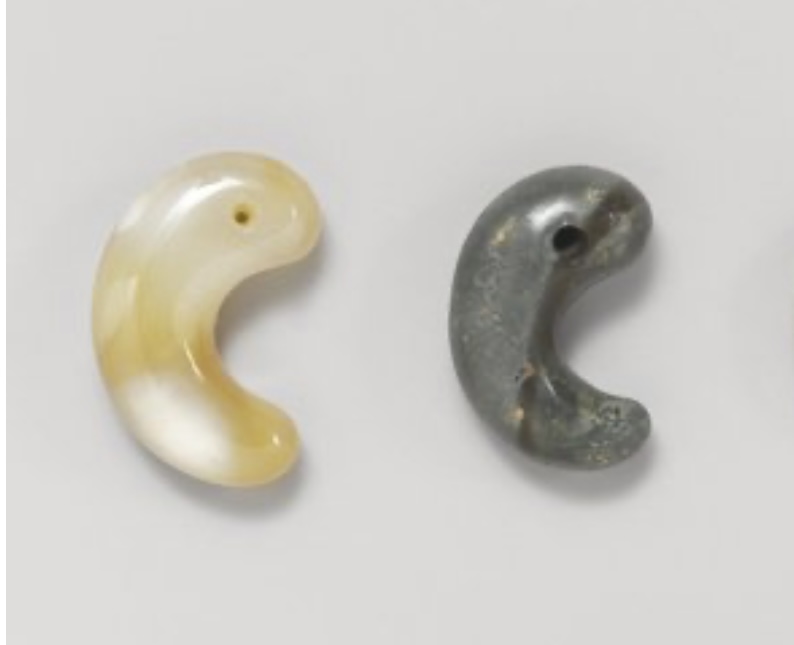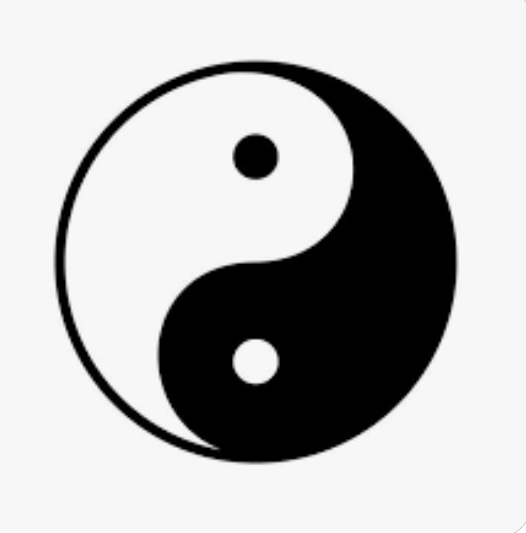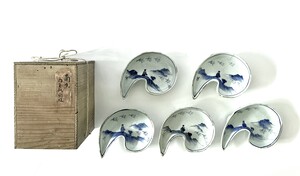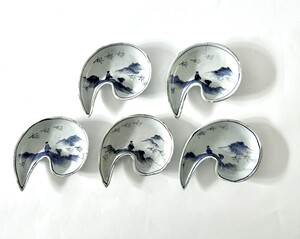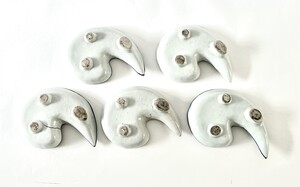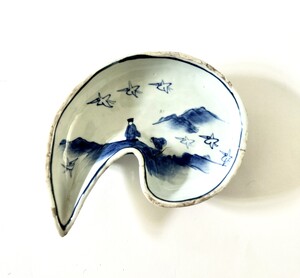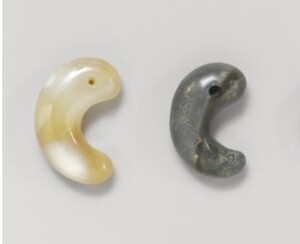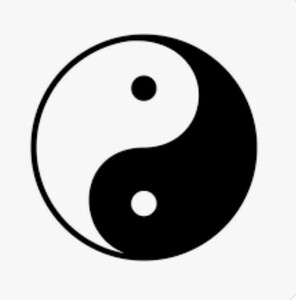Ming dynasty, Tianqi period (1620-1627)
The deep dishes are in the form of a magatama, a comma-shaped jewel, supported on three feet. The interior is painted with a landscape scene showing a scholar standing on a hill while an attendant is climbing up the hill carrying a bag over his shoulder.. Seven cranes are seen in flight painted in blue outlines. The shape of the dish is outlined in a single blue line below the rim. The edges show the characteristic 'moth-eaten' mushikui.
Length 16.5 cm; Height 4 cm; Japanese box
The shape of these dishes is very rare and unusual.
Magatama (curved jewels) are comma-shaped jewels used in Japan dating back to the Jomon period (14000 BC to 400 BC).
First made of primitive stone, later often made of jade, agate, quartz or clay (see image 5 from the Brooklyn Museum). It has been regarded as an object for warding of evil and bringing good luck. There are some doubts about the origin of the shape. They are compared to teeth or tusks of animals like the tiger, thus symbolising good luck in agriculture. A second explanation is the comparison with a stylised representation of a fetus, symbolising fertility. Another explanation is that it represents the white yang half of the Daoist yin/yang symbol. The white male part symbolises warmth, positive energy, active motion, and the sun
BFE 94 明天啟 一組五件瓷盤(向付)
時代:明天啟,1620至1627年。
特徵:此器為日本市場而製。盤深且呈罕見的勾玉形,下接三足。盤內裝飾山水畫,描繪翱翔天際的七隻白鶴、站於山崖上的書生及其隨從。盤緣下方勾勒一圈藍線,邊沿可見釉面從胎體脫落的典型「蟲食」痕(日文:虫喰い)。
尺寸:長16.5公分;高4公分;附日本木箱。
